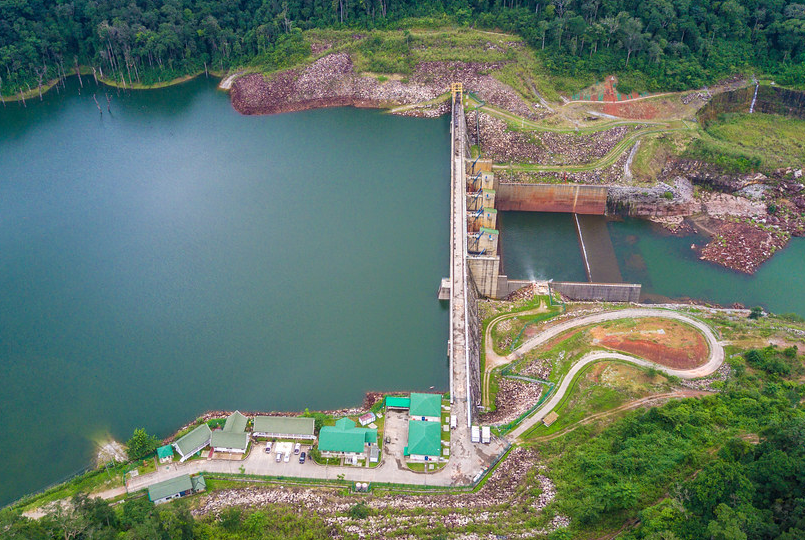HIVE Digital Technologies just sealed a major deal to build a 100-megawatt hydroelectric Bitcoin mining site in Paraguay, tapping into clean energy from the massive Itaipu Dam. This move boosts their green operations and sets new records in renewable crypto mining. What’s next for this bold push, and how does it shake up the industry?
HIVE Digital has locked in an agreement to add 100 megawatts of hydroelectric power for Bitcoin mining in Paraguay. The new site in Yguazu will push their total capacity there to 400 megawatts by 2026. This comes right after talks with local leaders, showing strong support for business growth in the region.
The project draws power straight from the Itaipu Dam, one of the world’s largest hydroelectric plants. This setup makes the facility Paraguay’s biggest renewable mining operation soon. HIVE started this journey back in July 2024 with initial plans, and now they’ve finalized the deal as of October 21, 2025.
Construction kicks off soon, with full operations expected by 2026. The company aims to ramp up its Bitcoin mining hash rate to 35 exahash per second, a huge jump from current levels. That’s like boosting computing power five times over in some areas.
HIVE’s leaders say this fits their goal of using only green energy. They’ve already grown their hash rate from 6 EH/s at the start of 2025 to 22 EH/s now, defying slowdowns in the wider industry.
Why Hydroelectric Power Matters Here
Paraguay’s abundant hydroelectric resources make it a perfect spot for this expansion. The Itaipu Dam alone generates enough clean energy to power massive operations without relying on fossil fuels. This helps HIVE cut costs and reduce their carbon footprint, a big win in an industry often slammed for high energy use.
Bitcoin mining eats up a ton of electricity, and critics point out its environmental toll. But HIVE’s approach flips the script by using renewable sources. A 2023 study by the Cambridge Centre for Alternative Finance showed global Bitcoin mining uses about 121 terawatt-hours per year, equal to some countries’ total power needs. By going hydro, HIVE avoids adding to pollution.
This isn’t just about mining Bitcoin. The new data center will also support high-performance computing and AI tasks. Through a partnership with Bell Canada, HIVE plans to grow its AI operations fivefold. That means more jobs and tech growth in Paraguay.
Local officials back the project, seeing it as a way to attract investment. President Santiago Pena has pushed for a business-friendly environment, and HIVE’s move endorses that vision.
Growth Targets and Industry Impact
HIVE sets its sights on hitting 35 EH/s by 2026, making it one of the few Bitcoin miners still expanding hash rates amid market dips. This growth defies industry trends where many firms slow down due to rising costs and Bitcoin price swings.
Here’s a quick look at HIVE’s progress:
- Started 2025 with 6 EH/s
- Now at 22 EH/s after recent builds
- Targeting 35 EH/s with this expansion
This positions HIVE as a leader in sustainable mining. Analysts from The Miner Mag note that while others cut back, HIVE pushes forward with green strategies.
The expansion could produce over 8.5 Bitcoin per day at peak, based on current efficiencies. That adds real value for investors and the company, especially as Bitcoin values climb.
But challenges remain. Energy deals must stay stable, and global crypto regulations could shift. Still, HIVE’s focus on renewables gives them an edge.
Broader Effects on Crypto and Economy
This deal highlights Paraguay’s rise as a crypto hub, thanks to cheap, clean power. It could draw more companies, boosting the local economy with jobs in tech and construction.
For everyday people, it means potential lower energy costs if surplus power gets used efficiently. A 2024 report from the International Energy Agency pointed out how countries like Paraguay can turn hydro resources into economic drivers, creating thousands of jobs in related fields.
HIVE’s stock might see a lift too, as investors hunt for green crypto plays. The company has diversified into AI, reducing risks tied only to Bitcoin prices.
One key stat: HIVE’s fleet efficiency aims for 17.6 joules per terahash, among the best in the business, per their recent updates. This efficiency saves money and energy.
| Metric | Current (2025) | Target (2026) |
|---|---|---|
| Hash Rate | 22 EH/s | 35 EH/s |
| Capacity in Paraguay | 300 MW | 400 MW |
| Daily Bitcoin Output | ~8.5 BTC | Higher Potential |
This table shows the clear upward path.
The expansion stirs hope for a greener crypto future, countering fears of environmental harm. It surprises with how quickly HIVE scales up, filling knowledge gaps on sustainable mining.
HIVE’s bold expansion in Paraguay marks a turning point for clean Bitcoin mining, blending massive growth with eco-friendly power to hit 35 EH/s by 2026. It sparks hope for a sustainable crypto world while boosting local economies and tech jobs.


 Bitcoin
Bitcoin  Ethereum
Ethereum  Wrapped SOL
Wrapped SOL  Cardano
Cardano  Chainlink
Chainlink  Sui
Sui  Avalanche
Avalanche  Mantle
Mantle  Polkadot
Polkadot  Bittensor
Bittensor  NEAR Protocol
NEAR Protocol  Aptos
Aptos  Arbitrum
Arbitrum  Internet Computer
Internet Computer  Algorand
Algorand  Cosmos Hub
Cosmos Hub  Jupiter
Jupiter  Render
Render  Sei
Sei  Quant
Quant  Filecoin
Filecoin  Immutable
Immutable  Celestia
Celestia  Optimism
Optimism  Injective
Injective  Stacks
Stacks  The Graph
The Graph  Pyth Network
Pyth Network  Flow
Flow  THORChain
THORChain  MultiversX
MultiversX  dYdX
dYdX  Akash Network
Akash Network  Illuvium
Illuvium  Metis
Metis  Manta Network
Manta Network  Dymension
Dymension  Kujira
Kujira